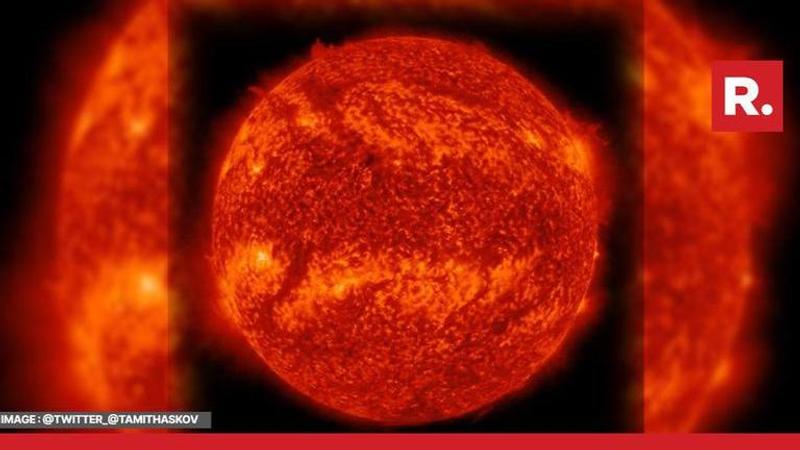Published 15:59 IST, February 10th 2023
Huge piece of the Sun breaks off; Leaves scientists baffled; Watch
Scientists were left baffled after material broke off of the Sun’s surface and created a tornado-like swirl around its northern pole.

An event has left scientists baffled and it considers the largest star in our solar system, the Sun. Last week, some material broke off from the mega star's surface and started swirling around its north pole. This unprecendented phenomenon was discovered by American space agency NASA through their legendary James Webb Space Telescope.
Dr. Tamitha Skov, a space weather forecaster tweeted the occurrence. “Talk about Polar Vortex!” she wrote on Twitter last week: “Material from a northern prominence just broke away from the main filament & is now circulating in a massive polar vortex around the north pole of our Star. Implications for understanding the Sun’s atmospheric dynamics above 55 degree here cannot be overstated!”
Talk about Polar Vortex! Material from a northern prominence just broke away from the main filament & is now circulating in a massive polar vortex around the north pole of our Star. Implications for understanding the Sun's atmospheric dynamics above 55° here cannot be overstated! pic.twitter.com/1SKhunaXvP
— Dr. Tamitha Skov (@TamithaSkov) February 2, 2023
This event which is commonly known as a prominence comprises a large, bright feature that moves away from the Sun in a filament-like form. There have been other filament tears from the Sun in the past, but experts are saying nothing like this has happened before. Unusual activity typically occurs at the sun’s 55 degree latitudes once every 11-year solar cycle, according to experts, but this incident is stumping researchers.
Solar physicist Scott McIntosh, the deputy director at the National Center for Atmospheric Research in Colorado, told Space.com that researchers aren’t sure what causes such a unique event. “Once every solar cycle, it forms at the 55 degree latitude and it starts to march up to the solar poles,” McIntosh said. “It’s very curious. There is a big ‘why’ question around it. Why does it only move toward the pole one time and then disappears and then comes back, magically, three or four years later in exactly the same region?”
"While experts admit it probably has something to do with the sun’s magnetic field, the rest remains a mystery due to humanity’s limited view of its star. Scientists can only view the sun from the “ecliptic plane,” or the geometric plane that contains the orbit of Earth," according to NY Post.
Solar projections from the sun are known to disrupt GPS systems, power grids and even radio signals. Just this month, the sun projected multiple “powerful” flares that disrupted communication on Earth, according to Space.com, although it appeared to be otherwise harmless. The sun is en route to reaching its peak of activity during the current 11-year cycle in 2025.
Updated 16:45 IST, February 10th 2023



